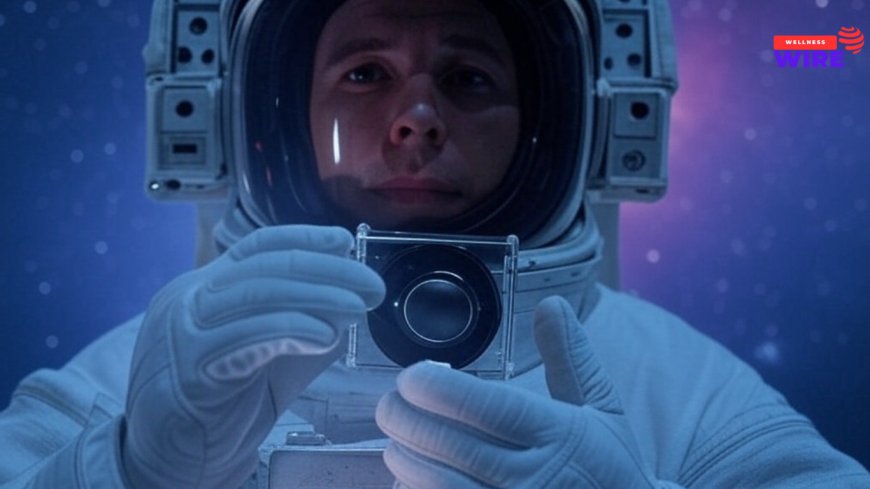Quantum Sensors in Space Exploration: Unlocking the Secrets of the Cosmos
How quantum sensors are revolutionizing space exploration. Discover their role in gravity mapping, deep-space navigation, and the search for dark matter.

Introduction: A New Era in Space Exploration
Space has always been the final frontier, full of mysteries waiting to be unraveled. But as we push the boundaries of exploration, traditional instruments often fall short. Enter quantum sensors—a revolutionary technology that promises to transform how we detect, navigate, and explore the cosmos.
From mapping gravitational anomalies on distant planets to searching for elusive dark matter, quantum sensors are paving the way for a new age of discovery. But what exactly are these sensors, and how do they work? Let’s explore the science behind them and their game-changing role in space exploration.
What Are Quantum Sensors?
Quantum sensors leverage the principles of quantum mechanics, the branch of physics that governs the strange behavior of particles at the atomic and subatomic levels. These sensors measure physical properties—such as time, gravity, and magnetic fields—with unprecedented accuracy.
Unlike traditional sensors, which rely on classical physics, quantum sensors use quantum states (like superposition and entanglement) to detect changes in their environment. This allows them to:
- Measure gravitational fields with extreme precision
- Detect tiny variations in magnetic and electric fields
- Improve space navigation and positioning
- Uncover hidden cosmic phenomena, including dark matter
Now, let’s dive into the most promising applications of quantum sensors in space exploration.
1. Quantum Sensors for Gravity Mapping
One of the most exciting applications of quantum sensors in space is gravity mapping. Every planet, moon, and asteroid has a unique gravitational signature, which can reveal valuable information about its:
- Interior composition
- Hidden water or ice deposits
- Underground lava tubes and tunnels
Quantum sensors, particularly atom interferometers, can detect minuscule gravitational changes that traditional methods might miss. These advancements could help locate underground water sources on Mars, identify potential sites for human colonization, and even reveal the structure of exoplanets light-years away.
Example Mission: GRACE-FO (Gravity Recovery and Climate Experiment Follow-On)
NASA’s GRACE-FO mission, launched in 2018, already uses a form of quantum sensing to measure Earth’s gravitational changes due to climate shifts. In the future, similar technologies could be deployed on other planets to study their geological history and potential habitability.
2. Ultra-Precise Quantum Clocks for Deep Space Navigation
In deep space, precision is everything. Even a small navigational error could result in a spacecraft missing its target by millions of miles. That’s where quantum clocks come in.
How Do Quantum Clocks Work?
Quantum clocks measure time based on the vibrations of atoms, offering:
- A trillion times greater precision than current atomic clocks
- Better synchronization of spacecraft across vast distances
- Accurate autonomous navigation without relying on Earth-based signals
Why Does This Matter?
Currently, space missions depend on Earth-based navigation systems, such as the Deep Space Network (DSN), which sends signals back and forth between spacecraft and mission control. This process introduces delays, especially for missions beyond Mars.
With onboard quantum clocks, spacecraft could navigate independently, making real-time course corrections without waiting for instructions from Earth.
Example: NASA’s Deep Space Atomic Clock (DSAC)
NASA’s DSAC mission successfully tested a next-generation atomic clock in orbit, a step toward fully autonomous spacecraft navigation. Future quantum-based versions could make interstellar travel a reality.
3. Quantum Magnetometers for Mapping Cosmic Magnetic Fields
Magnetic fields play a crucial role in shaping planets, stars, and galaxies. However, measuring them accurately in deep space has always been a challenge. Quantum magnetometers, which use quantum entanglement to measure weak magnetic fields, could provide:
- Detailed maps of planetary magnetospheres
- Insights into cosmic radiation shielding
- Clues about the origins of celestial bodies
This could be particularly useful in:
- Understanding why Mars lost its magnetic field and atmosphere
- Detecting hidden subsurface oceans on moons like Europa and Enceladus
- Studying the influence of cosmic magnetic fields on star formation
Source: European Space Agency (ESA) Research on Quantum Magnetometry
4. Searching for Dark Matter and Exotic Physics
One of the biggest mysteries in astrophysics is dark matter, an invisible substance that makes up about 85% of the universe’s mass. Despite decades of research, scientists still don’t know exactly what it is.
Quantum sensors—particularly ultra-sensitive interferometers and particle detectors—may finally provide the breakthrough needed to detect dark matter. These sensors could:
- Identify minute fluctuations in gravitational waves
- Detect exotic particles that interact with gravity differently
- Offer clues about the fundamental nature of the universe
NASA and the European Space Agency (ESA) are actively exploring quantum-based technologies for future dark matter missions.
Source: CERN Dark Matter Research
5. Earth Applications: How Quantum Sensors Help Us Here at Home
While quantum sensors are revolutionizing space exploration, they’re also making a huge impact here on Earth. These sensors are being used in:
- Climate change monitoring—detecting sea-level rise and ice loss
- Seismology—predicting earthquakes with higher accuracy
- Medical imaging—leading to breakthroughs in brain research and diagnostics
The same technologies that will one day guide interstellar missions are already improving life on Earth.
Challenges and the Future of Quantum Sensors in Space
Despite their potential, quantum sensors still face several hurdles:
- Extreme conditions in space—low temperatures and radiation can interfere with quantum states.
- Size and energy constraints—miniaturizing quantum sensors for spacecraft use is a major challenge.
- Data processing limits—interpreting quantum data in real time requires advanced AI integration.
However, with continued research, these challenges are likely to be overcome, bringing us closer to a future where quantum sensors become a standard tool for space exploration.
Conclusion: Are Quantum Sensors the Key to the Next Space Age?
Quantum sensors are not just an upgrade—they represent a fundamental shift in how we explore the universe. Whether it’s mapping gravitational anomalies, navigating deep space, or detecting dark matter, these cutting-edge devices are set to revolutionize space exploration in ways we’re only beginning to understand.
As scientists continue refining this technology, one thing is clear: Quantum sensors will be at the heart of humanity’s next great space missions. The question is—how far will they take us?
What's Your Reaction?
 Like
0
Like
0
 Dislike
0
Dislike
0
 Love
0
Love
0
 Funny
0
Funny
0
 Angry
0
Angry
0
 Sad
0
Sad
0
 Wow
0
Wow
0



















































